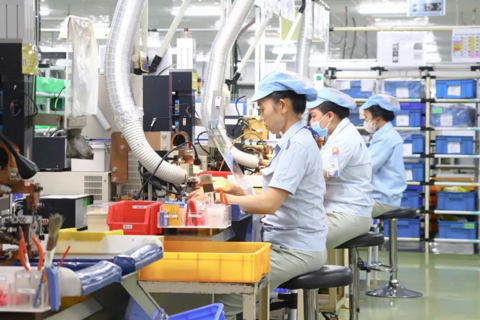Hanoi youth who built Lam Dong from scratch
Nearly five decades ago, hundreds of young Hanoians left behind city life to carve out a future in the remote highlands of Lam Dong. What began as a national call to build a new economic zone became a lifelong journey of hardship, sacrifice, and enduring community on Vietnam’s frontier.
THE HANOI TIMES — On a damp morning in late March 1976, eighteen-year-old Do Thanh Hang stood with her heart pounding outside her home in Xuan Non, Dong Anh District. She clutched a small duffel bag and a faded photo of Hanoi, her entire previous life. That day, she answered an urgent call from the Party and youth organizations: leave her beloved capital behind and journey 1,600 kilometers into the Central Highlands to build a new economic region in Lam Dong.
“Young at heart, unsure what lay ahead… but I was eager,” Hang recalls today, nearly 70 years old. “My family didn’t stop me. We all believed in what we were doing.”
Her story was echoed by thousands from Hanoi in spring 1976. The Central Highlands, once a war-scarred land of “poisonous forests”, became their task. Their goal was to reclaim wild land, carve out fields and homes, and forge a thriving community.
On March 29, 1976, the first advance youth team departed Gia Lam District, Hanoi. More than 120 volunteers sent to survey and clear the Nam Ban area. They were soon followed by teams from Tu Liem, Dong Anh, Thanh Tri, and Hanoi’s inner districts of Ba Dinh, Dong Da, Hoan Kiem and Hai Ba Trung, all stepping off buses and trains into an alien highland world.

Young pioneers from Hanoi lay foundations for a new homeland in Lam Dong. File Photo/Trong Tung
Eighteen-year-old Hoa Van Viet, from Phu Thuong (then Tu Liem), remembers the journey vividly. “We chopped through forests, trekked thousands of kilometers, and suffered malaria, sand flies, wild animals… We built straw-and-bamboo huts, cut trees, planted corn, cassava, and sweet potato. For days, breakfasts were just corn grits. Only later, once irrigation was set up, could we plant rice.”
The greatest danger wasn’t hunger but leftover war hazards. Landmines, old ammunition, and groups like the Fulro, anti-government remnants, threatened every step. “We took night shifts guarding camps, set secret signals to warn of Fulro,” says Dao Van Phuc, born in 1960 in Gia Lam District.
“Some comrades died protecting the region. But no one backed down,” said Phuc.
By late 1977, the initial wave of about 2,350 advance workers had laid the groundwork. They wrested rudimentary roads from the jungle, built temporary homes, clinics, schools, dug wells, and constructed nascent communications.
In October 1979, Hanoi’s city government established a "Welcome Committee" for settlers in Lan Tranh, part of the Nam Ban region. Within six months, nearly 1,000 workers from Hanoi had joined the growing community.
Motivated by propaganda and solidarity, over the next few years another 5,124 families, 23,665 people, passed through the gates of Lam Dong from Hanoi. Ten thousand volunteered for agricultural and construction work. They confronted disease, isolation, and resource scarcity, yet remained unwavering.
Remarkably, only around 5% of settlers eventually returned to Hanoi, compared to a 27% abandonment rate in other economic‑new regions nationwide. Those who stayed found stable work and opportunities that outpaced their origins.

|
Infrastructure and Industry By the early 1980s, the new Lam Ha District stood on its feet. Collective and state-run enterprises replaced tents: - 5,539 hectares of land cleared - 5,212 houses built - 276 km of roads and 29 bridges - 12 irrigation projects and 1,288 wells - Formation of 3 state farms, 1 silkworm breeding station, 13 cooperatives, and more than a dozen small enterprises. This transformation, turning jungles into farms, poverty into reliability, was a tribute to creative labor, local authority support, and thousands of young volunteers’ resolve. |
Seeds of Hanoi, fruits of unity
The ripple effect reached far beyond Lam Dong as the cultural imprint of Hanoi remained strong. The discipline, civic spirit, and language of the capital shaped new community norms. Joint leadership from Hanoi and Lam Dong provincial authorities eased political, economic, and security development, creating a model for lasting growth.
Phan Huu Gian, former Deputy Director of the Hanoi New‑Region Committee in Lam Dong, called the achievements “an essential foundation.” He noted how the project bolstered the area’s political, economic, and security capacity, laying the groundwork for Lam Ha as a stable, organized, and growing district.
After 1979, most advance workers returned to Hanoi to continue their studies, civil service, or jobs. Yet 249 stayed, building careers and lives in Lam Ha. Some rose to leadership positions in agriculture, education, local government.
Today, the former youth pioneers still gather over tea in modest homes, on village roads, at district halls. Their conversations trace the arc from hardship to harvest.

Nguyen Thi Mao, Head of the Liaison Committee of Hanoi's youth pioneers in Lam Dong, recalled that many of their comrades had been seriously injured, and some had even lost their lives during the effort to build and defend the new economic zone. But rather than deterring the group, those sacrifices only deepened their determination to endure hardship, overcome obstacles, and see the Hanoi New Economic Zone in Lam Dong a succeed.
“We drank stream water, ate forest greens, slept in tents,” said Nguyen Thi Mao, Head of the Liaison Committee of Hanoi's youth pioneers in Lam Dong, “But those were the brightest memories of our youth.”
Their shared history marked by disease, landmines, Fulro ambushes brought tragedy and sacrifice. But it also solidified their bond and legacy.
Nearly half a century on, Lam Ha stands as a testament to collective will, solidarity, and vision. From forest to farmland, tent to township, hardship to prosperity, it embodies the promise of Vietnam’s post‑war reconstruction.
Yet perhaps its greatest legacy is human. The youth who stepped forward carried the beliefs and culture of Hanoi, sowing seeds that grew into institutions, communities, and lives. They proved how an idea built not on capital, but on courage and solidarity could shape a new reality.
Today, the children and grandchildren living in Lam Ha reap the harvest of that vision. Their schools, fields, clinics, and roads stand as markers of sacrifice and optimism. The land remembers who built it and so do the hands that still work it, half a century later.











